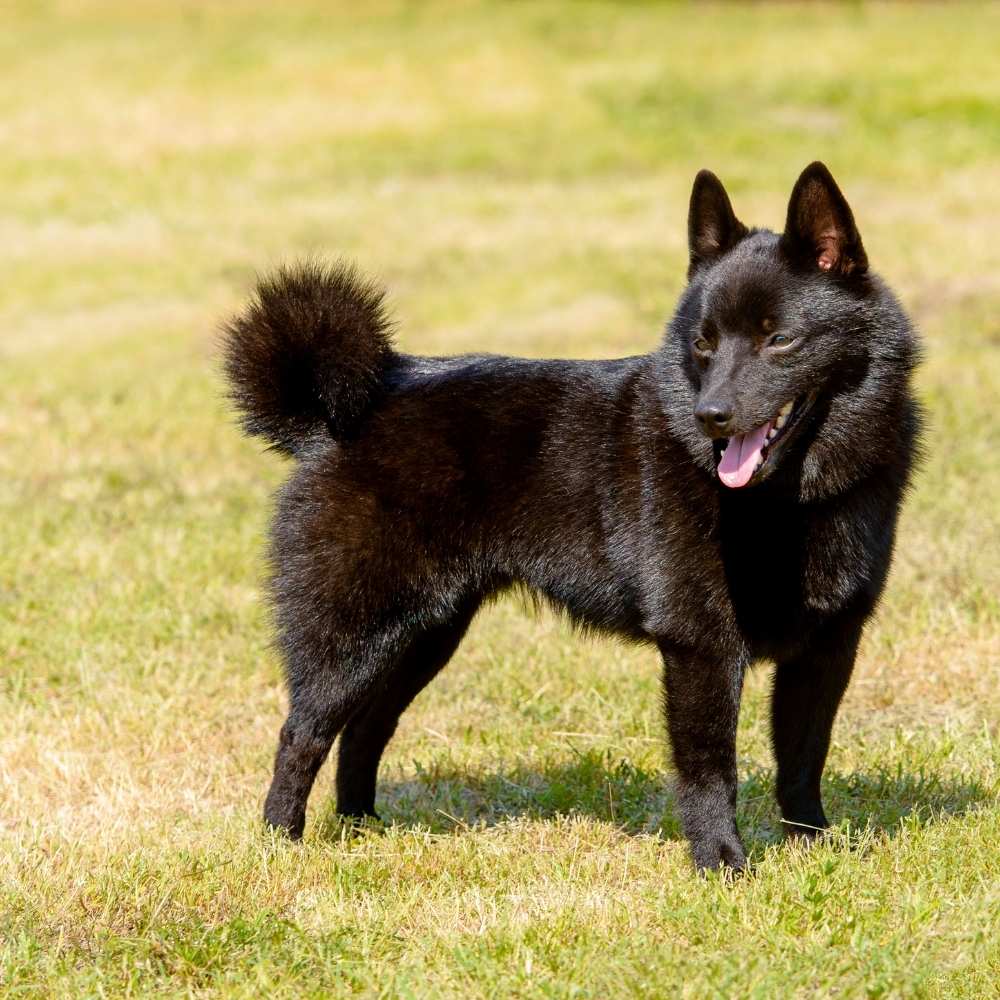Quick Facts about the Schipperke
- Origin: Belgium
- Weight: Males: 5–8 kg, Females: 4–7 kg
- Life expectancy: 13–16 years
- Coat Colour: Black (most common), but can also be fawn, red, cream, or blue
- Breed Group: Non-Sporting
Small in size, big in spirit—the Schipperke is a lively, clever watchdog with a fox-like face and endless curiosity. Once the guardian of canal boats and workshops, this bold little dog remains fiercely loyal and always alert.
Schipperke History
The Schipperke hails from Belgium, dating back to the 1600s. It was originally bred as a watchdog and ratter aboard canal barges and in workshops, earning the nickname “Little Captain” or “Little Skipper.” Despite its resemblance to a Spitz, it’s more closely related to the Belgian Sheepdog.
The breed was especially favoured by working-class artisans and boatmen. Its compact size, watchful nature, and high energy made it ideal for tight spaces and active roles. Recognised by European kennel clubs in the late 19th century, the breed gained international admiration shortly thereafter.

Schipperke Temperament
Energetic, fearless, and highly intelligent, the Schipperke thrives in environments where it can stay mentally and physically engaged. It’s an excellent watchdog—vigilant, vocal, and quick to alert. With family, it’s affectionate and often forms a tight bond, though it may be reserved with strangers.
It has a mischievous streak and needs clear boundaries and regular challenges to avoid behavioural issues.
Note: This breed is known for being an escape artist. Its curiosity and independence demand secure fencing and reliable recall training.
Health and wellness
The Schipperke is a hardy breed but may carry specific genetic risks. Their thick, double coat requires regular brushing, especially during shedding seasons. Regular exercise is a must to avoid frustration and weight gain.
Responsible breeders screen for inherited diseases, particularly those affecting metabolism and vision.
Significant problems:
MPS IIIB (mucopolysaccharidosis)
Epilepsy
Hypothyroidism
Legg-Calvé-Perthes disease
Patellar luxation
Life expectancy: 13–15 years
🔍 Looking to go deeper into dog training?
Use these categories to explore targeted guides and articles on canine behavior, nutrition, obedience, entertainment, and more.









